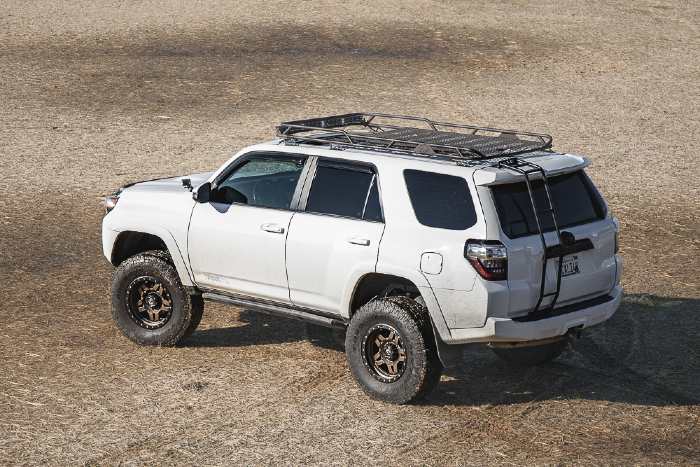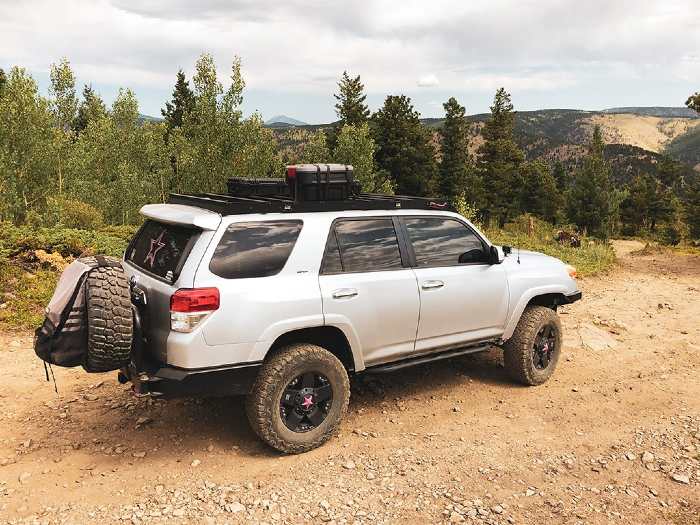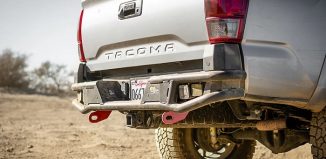Toyota has been at the forefront of Australian car sales for quite some time. It has supplied reliable passenger cars good for daily driving, rugged utes for the workplace, and indestructible 4WDs that make easy work of the bush. It also offers a range of vehicle accessories that make their cars even better, providing both added functionality and improved appearance. To complement your Hilux at work, or any vehicle you take off road, like the Landcruiser, a fully-featured roof rack goes a long way. It will cater to your storage needs, something that we can never get enough of, while also taking care of the smaller details.
A Toyota roof rack maximises the overall storage space of your car. No matter how big the car, or the size of the boot, having a place to put those extras always pays off. With roof racks covering the bigger part of the roof, things like kayaks, canoes or bikes, or anything that just doesn’t fit in the boot, can be taken with you safely. There’ll be no jostling around in the tray, or any unwieldy items rubbing against doors, windows or passengers in the cabin. Having things out of the way means a comfier ride for those in the back, with an interior that’s left clean.

Roof Rack Parts
Like all roof racks, Toyota roof racks have three main parts – the mounting brackets and bolts, the cross bars, and the platform or rack itself. Mounting brackets fit in predrilled mounting points in the roofline or can be installed in vehicles with roof channels, like the Hilux N70 and Landcruiser 100 Series. A pair of crossbars is affixed in the brackets. In vehicles with multiple mounting points, this means flexibility, allowing you to place the bars at your preferred location along the roof. Bars are placed parallel to each other. The racks are securely bolted onto the crossbars. For channel systems, you can have several brackets for a larger, heavier rack.
All genuine OEM and aftermarket Toyota racks, brackets and crossbars are made of durable weatherproof stainless steel or coated aluminium, so you’ll know they’ll last years to come.
Types of Roof Racks
Depending on the weight and size of your load, and the available roof space you can get racks in different sizes and different designs. There’ll be standardised widths to fit most Toyota cars, but lengths vary. If you’re carrying smaller loads, go for roof racks 850mm long. These will fit single cab variants of the Hilux, or you can combine two of them on vehicles will longer rooflines. Longer racks are sold in 1500mm, 1850mm, 2200mm and 3300mm lengths. They’re good for dual-cab utes, station wagon 4WDs, and the longest are suitable for vans like the Hiace.
In terms of design, most Toyota cars will carry raised roof racks. There are platforms that are flat and consist either of a row of bars or a mesh design. Platform racks can carry items of all shapes and sizes, and come in most dimensions mentioned above. They’re good for bigger things like bikes. For smaller items, however, roof cages and baskets are better. You can store more things, like spare tyres, toolboxes, ladders and any gear that fits. Larger, longer cages will also provide for better organisation with multiple internal crossbars for tying down smaller things. Lastly, there are roof racks with the camper in mind. These have tent and awning rails, so installing roof racks is important in order to attach a cargo carrier, which is quick and easy. All racks include locks to safeguard your gear.

Things to Consider
Before going out and buying the first rack you see, there are a few things to think about. First is the type of vehicle. Single and dual cab utes take shorter platforms and cages, with longer racks suited to the Landcruisers, the Prado and Hiace. This is important because all vehicles will have different recommended roof weight capacity, something you can find in the car manual. And you don’t have to worry if your particular rack can carry the weight; even the smallest rack will be rated at nearly double the roof capacity. Calculate the weight of the things you’ll most often carry and get the appropriate roof rack.
Next is the type of rack you need. This is determined by what you’ll be carrying and what you use your vehicle for. If you often go camping then a large caged roof rack with tent rails will suit. It will also have space for any extra camping and safety gear. If you’re more into sports, flat platforms will be better for bikes, skis and canoes with the appropriate tying points. For tradies, smaller cages or platforms will carry any items you need at the workplace.
Lastly, consider whether you’ll be installing the roof racks by yourself or getting a professional to do it for you. If your car has roof channels then you’ll also need mounting kits with the appropriate brackets, nuts and bolts and some drilling to get racks fitted. Less work is needed for cars with the predrilled mounting points.
You can buy roof racks for your Toyota in different sizes and styles from a range of stores selling 4WD gear.












